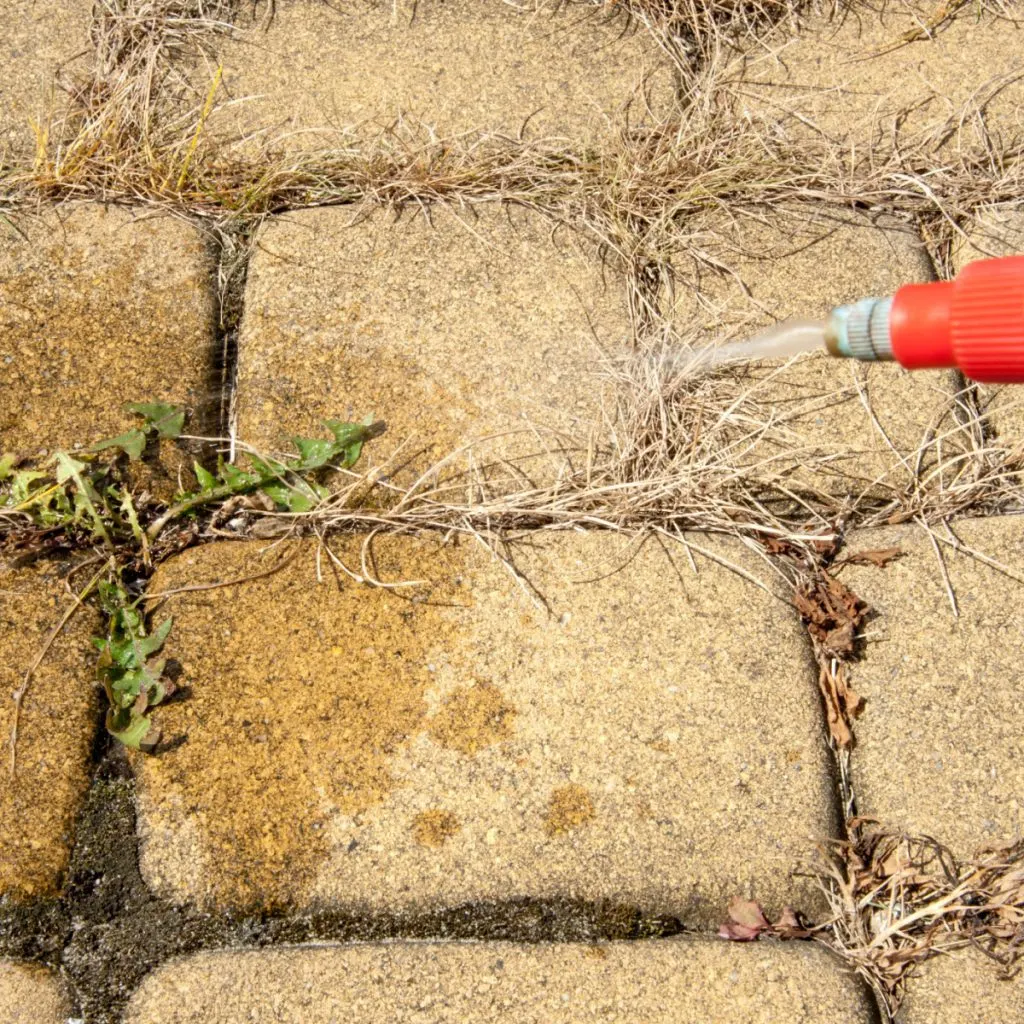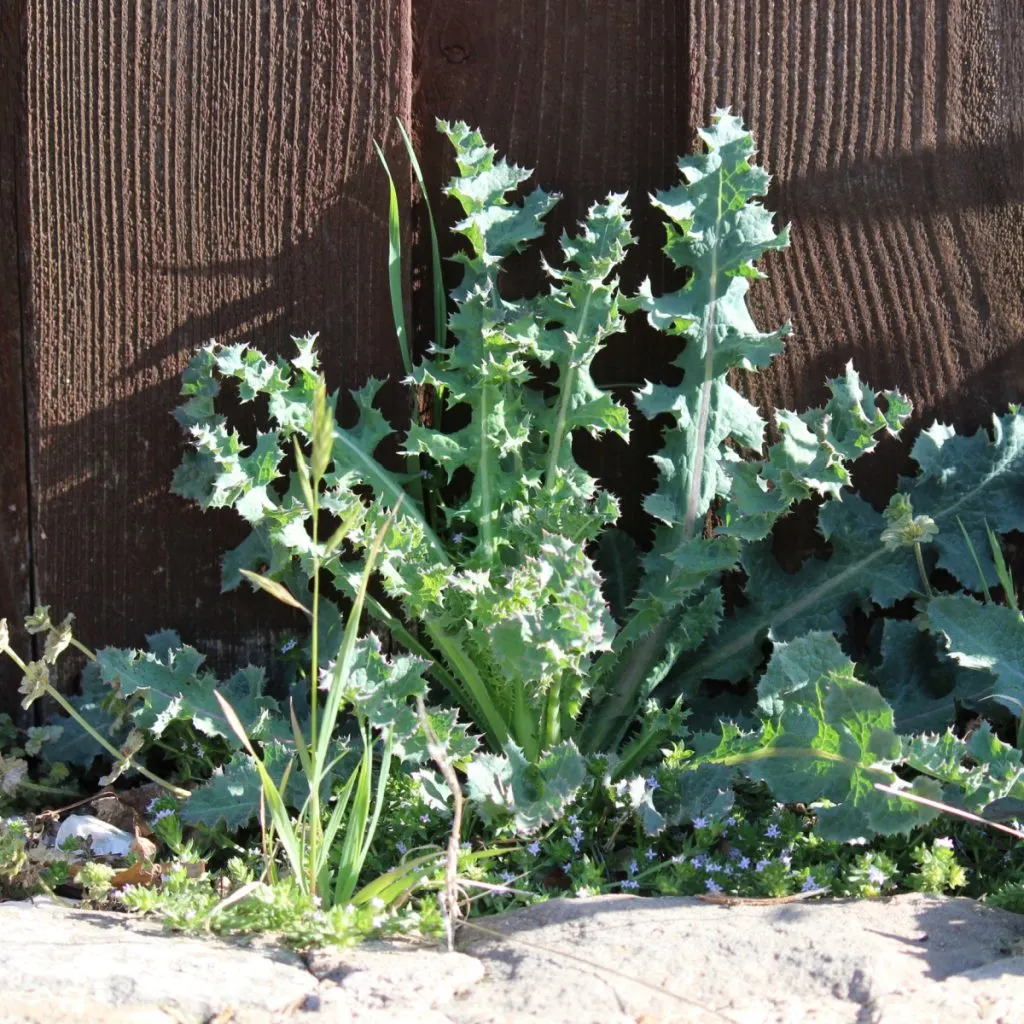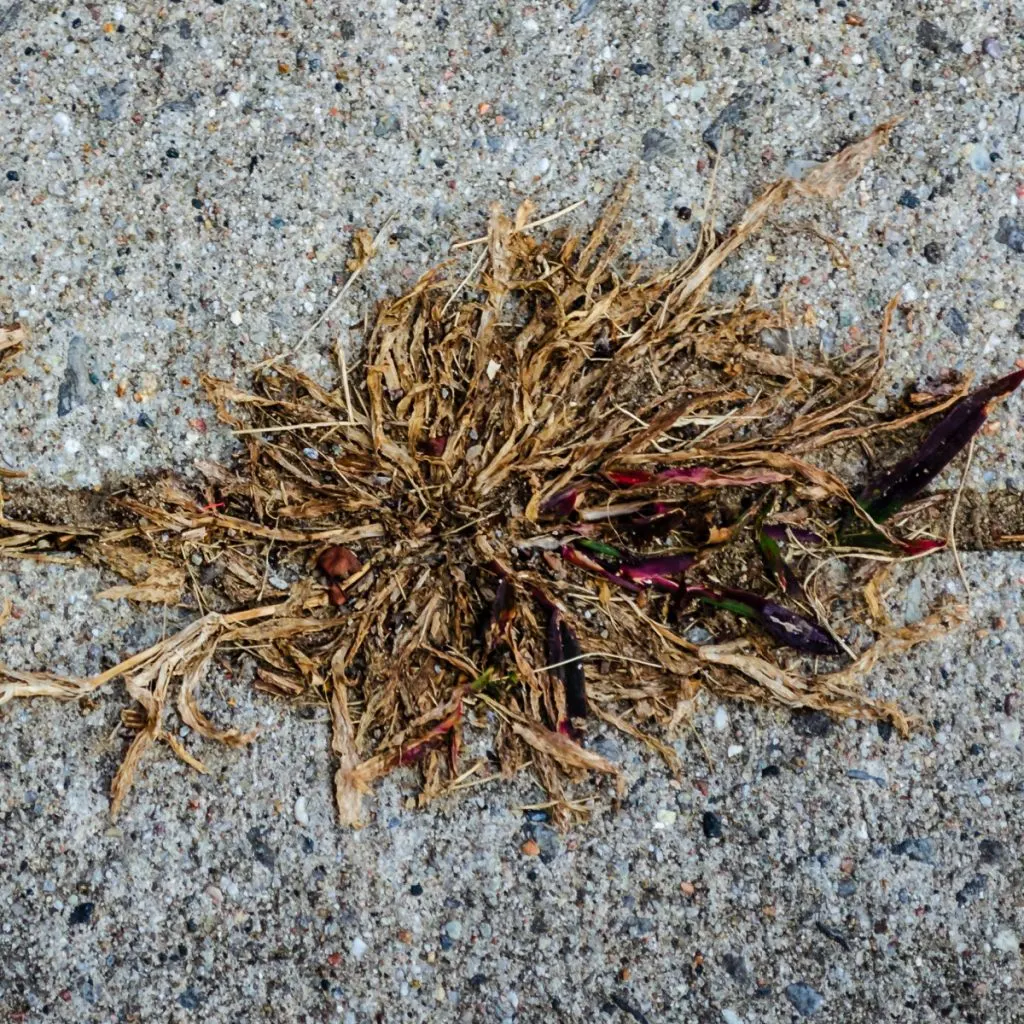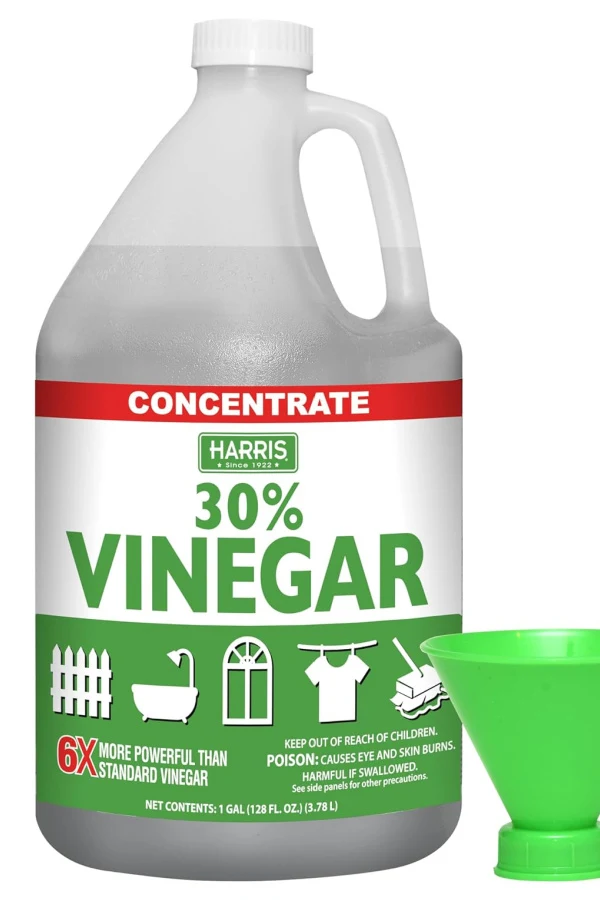Did you know that one of the easiest and all natural ways to get rid of weeds in driveways, paths and gravel areas is with horticultural vinegar? And even better, that you can also use it to eliminate tough and pesky weeds like thistle, bindweed and more in your flowerbeds and garden too?
It’s true! Not only is it easy and effective to use, horticultural vinegar is also a much safer choice for taking out weeds when pets, wildlife and humans are around. And, it’s even safe for important pollinators such as bees and butterflies as well.
There is more concern than ever for using chemical sprays for weed control. Not just for residue left in the soil, but for the animals, insects and humans that come in contact with the sprays both before and after they dry. But that is exactly where vinegar, or more precisely horticultural vinegar can work wonders!

The natural acid found in all vinegar is quite effective in killing and controlling weeds. Especially when you apply it in a higher concentration of acidity which is found in a type of vinegar known as horticultural or industrial strength vinegar.
The Power Of Horticultural Vinegar – How To Get Rid Of Weeds Naturally
Although you can kill weeds with traditional store bought vinegar, horticultural vinegar is a far better choice. Why? Because regular vinegar found at your local grocery store usually has an acidity of around 5%. Although this lower concentration can work to control emerging or tender young weeds, it is certainly no match for tough, mature and persistent weeds.
But horticultural vinegar is far stronger. In fact, it can have acidity concentrations that range anywhere from 20% all the way up to 40% or more!
Unlike the 5% off-the-shelf store versions, that higher concentration of acidity does wonders for controlling tough weeds. Not just for the short term – but killing all the roots of the weeds down deep to keep them from ever coming back!

How Vinegar Gets Rid Of Weeds – Using Horticultural Vinegar To Kill Weeds
Vinegar works in two distinct ways to eliminate weeds. First, the acid in it kills the vegetation as it comes in contact with it. In essence, it burns the foliage. But as the vinegar soaks into the soil, it also absorbs into the roots of the weeds.
This not only burns the roots with acid, but settles into the soil to make it difficult for the roots to recover. As an added benefit, as the soil turns more acidic, it makes it difficult for future weeds to germinate as well.
This is exactly why it is important to only use vinegar to kill weeds in spaces where plants will never grow – or when using for tough weeds like thistle, bindweed and crabgrass in a lawn, flowerbed or garden setting, to treat only the individual foliage of the leaf to keep nearby plants and grass safe. (more on that later in the article)
Choosing The Right Vinegar – How To Get Rid Of Weeds With Horticultural Vinegar
So what is the best horticultural vinegar strength to use? It really comes down to where you will be using it and what type of weeds you are attempting to eliminate.
You can still use ordinary 5% store bought vinegar to control tiny weeds and small seedlings. But in general, when spraying driveways, walkways and paths – aim for a vinegar with an acidity in the range of 30%. It is usually labeled as horticultural or industrial vinegar. Affiliate Product Link: Harris 30% Vinegar, Extra Strength
You can dilute it down with an equal amount of water to create a spray with a concentration of 15%. This is usually enough to kill most average weeds. But for stubborn weeds, you can use it at full strength (30%) to really clear out weeds for good!
How To Mix & Apply – How To Get Rid Of Weeds With Horticultural Vinegar
Before mixing or spraying any vinegar solution, it’s important to take a few precautions. Remember that although vinegar is all-natural, it is still an acid.
As with any acid, it is important to take precautions to prevent burns to the skin and eyes. Especially if you are using the more potent acidic concentrations found in horticultural vinegar. Always use goggles and gloves to prevent burns to the eyes or skin. In addition, be sure to keep any vinegar solution safe and securely stored away from children.
If spraying for tough weeds and using full strength, simply pour the vinegar into your sprayer. At this point, you can add a few drops of liquid dish soap for every quart of vinegar you put into the spray bottle.
To apply, a hand-help pump spray bottle works best for small areas. This is also great when trying to just hit a single plant in flowerbeds. For larger spaces such as driveways and walkways, a pump or backpack sprayer are the better choice. They can certainly help cover large spaces in quick fashion.

When To Spray – Using Horticultural Vinegar To Kill Weeds
Once your vinegar solution is ready to go and your protective gear is in place, it’s time to spray! The best time to spray vinegar for killing weeds is in the afternoon and on hot, wind-free sunny days.
The sun and heat help to accelerate the effectiveness of the acid in vinegar. They also help the vinegar absorb and kill weeds at a much higher rate. Avoid windy days as it can lift the spray to nearby vegetation, grass and flowerbeds, causing damage in the process.
Never spray when there is dew present or after a rain. This will only dilute the acidity level and make the solution much less effective. Spray so that you coat the foliage of the weeds completely. You do not have to douse or saturate the leaves, but make sure the foliage is wet.
It is best to use vinegar in areas where you do not grow anything else such as driveways, patios and paths. However, if you have stubborn large weeds like thistle, bindweed, etc. in your garden, lawn or flowerbeds – you can carefully spot spray them to eliminate them. See our article: How To Get Rid Of Canadian Thistle – Forever!
Again, when spraying in vegetation areas, be careful to not hit the surrounding vegetation in the process with over spray. For these areas, a small hand help sprayer can make spot weeding much easier.
How Fast Does Horticultural Vinegar Work To Get Rid Of Weeds
As for the speed of the solution’s effectiveness, it all depends on the weather and the type of weed. If using an acidity solution of at least 15 percent on a warm sunny day, the foliage will start to wilt and die back in 24 hours.

On cooler days, it may take a bit more time to begin to take effect. If after five to seven days, there is still some green to the weeds, repeat the application for complete control.
Remember, the larger the weeds and roots, the longer it will take to get them under control. Once you have the area cleared of weeds, try to spray new weeds as they are just beginning to sprout. This will require less vinegar strength, and make the weed seedlings easy to control.
Here’s to controlling your weeds with horticultural vinegar this year!
This Is My Garden
Follow Our Facebook Page For Great Gardening Tips And Advice! This Is My Garden Facebook Page
This Is My Garden is a garden website created by gardeners, for gardeners. Jim and Mary Competti have been writing gardening, DIY and recipe articles and books and speaking for over 15 years from their 46 acre Ohio farm. They publish three articles every week, 52 weeks a year. Sign up today to follow via email, or follow along!

